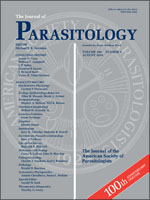Fecundity reduction is a well-recognized phenomenon of parasite infection in insects. Reduced production of eggs might increase longevity of a host and release nutrients to both host and parasite that would otherwise be used for oogenesis. The objective of this study was to assess effects on fecundity caused by Hepatozoon sipedon, an apicomplexan blood parasite of snakes, in its invertebrate host, the mosquito Culex pipiens. In the first gonotrophic cycle, the mean number of eggs laid by mosquitoes infected with H. sipedon did not differ significantly from those laid by uninfected mosquitoes. However, in the second gonotrophic cycle infected mosquitoes laid significantly fewer eggs than did uninfected mosquitoes, and fecundity was reduced by 100% in mosquitoes with parasite burdens of more than 60 oocysts. There was a significant negative correlation between parasite burden, or the number of oocysts, and the number of eggs produced in the second gonotrophic cycle. Significantly fewer viable larvae hatched from eggs laid by infected compared to uninfected mosquitoes in the second gonotrophic cycle. These data indicate that fecundity reduction occurs in this system, although the physiological mechanisms driving this phenotype are not yet known.
How to translate text using browser tools
1 August 2014
Fecundity Reduction in the Second Gonotrophic Cycle of Culex pipiens Infected with the Apicomplexan Blood Parasite, Hepatozoon sipedon
Laura V. Ferguson,
Todd G. Smith
ACCESS THE FULL ARTICLE

Journal of Parasitology
Vol. 100 • No. 4
August 2014
Vol. 100 • No. 4
August 2014




